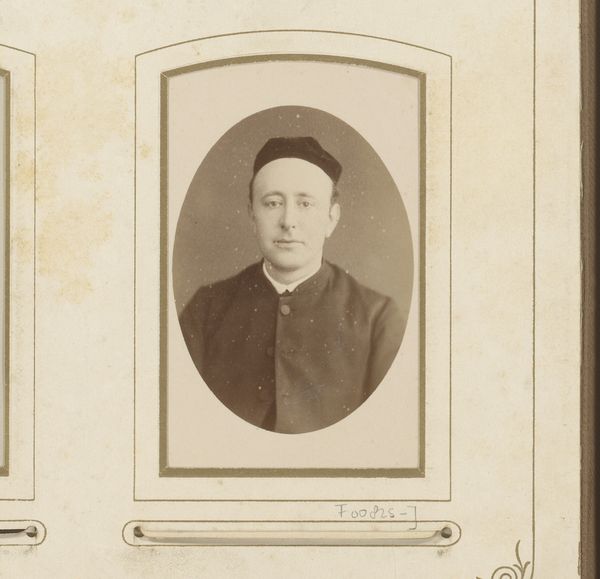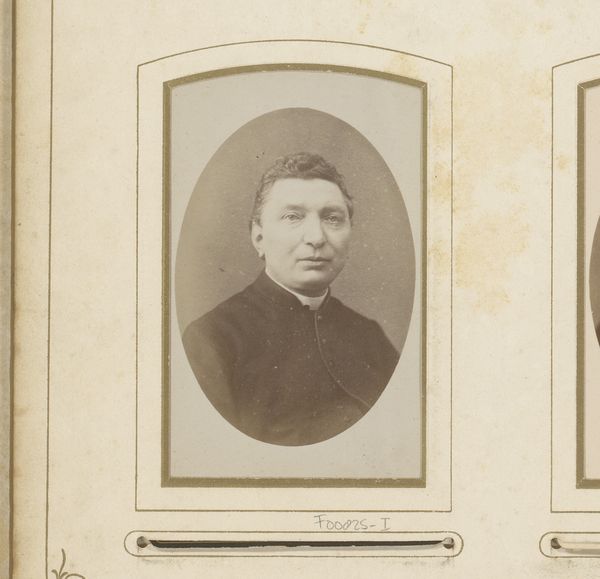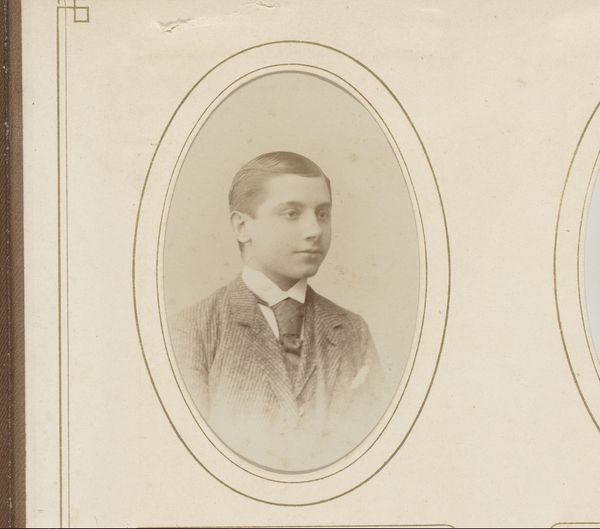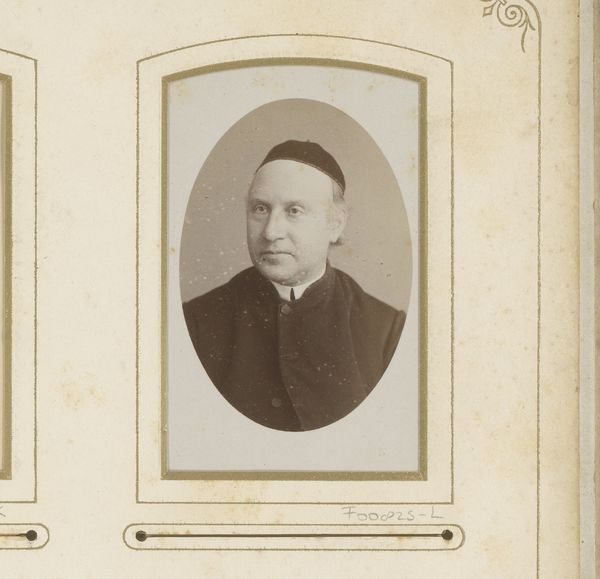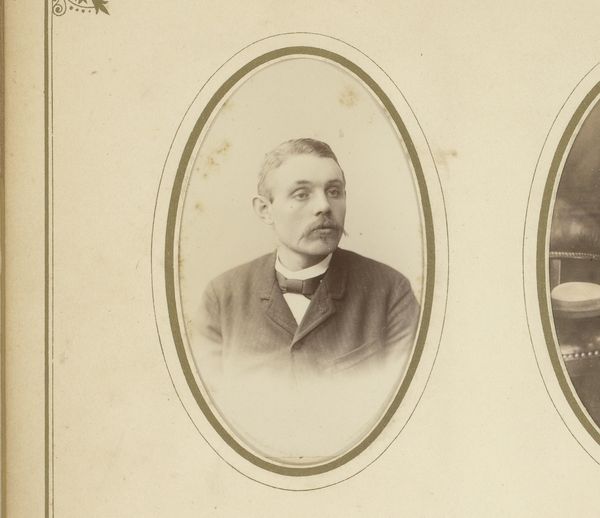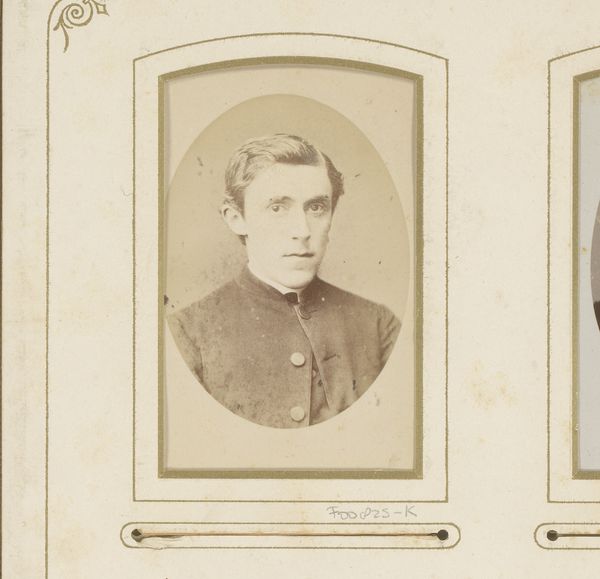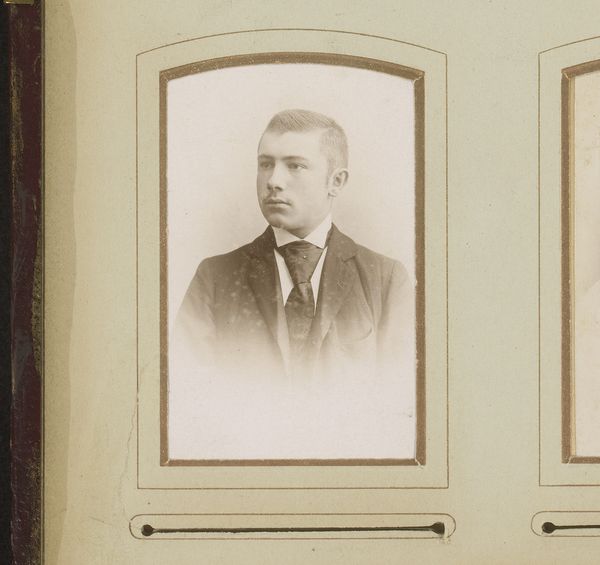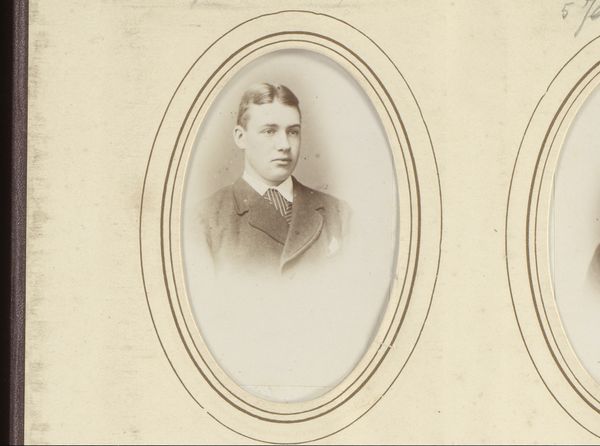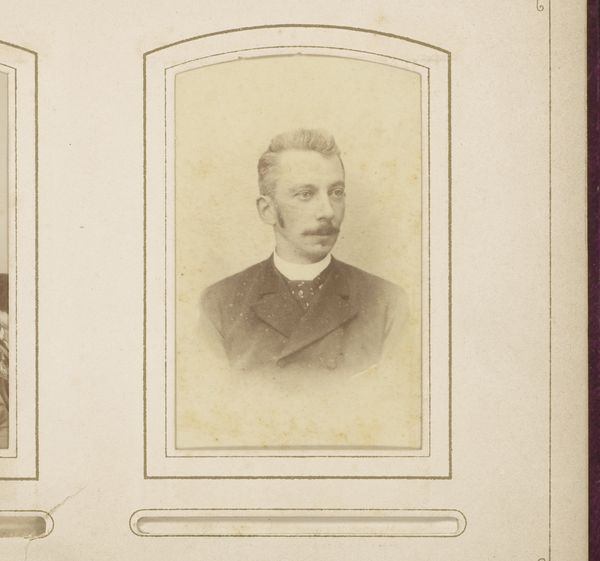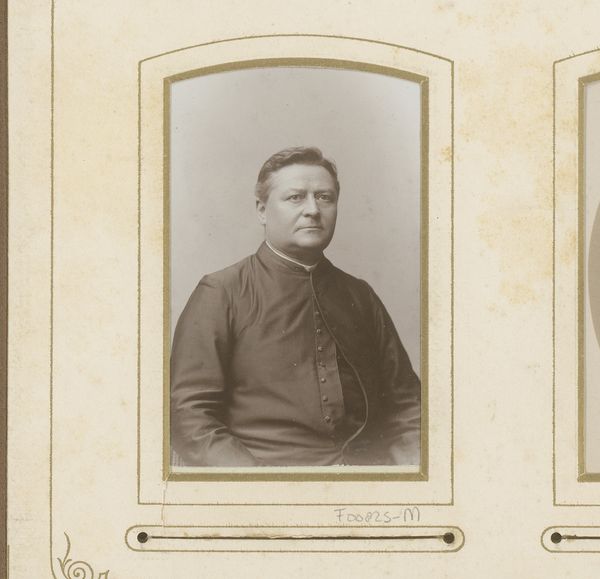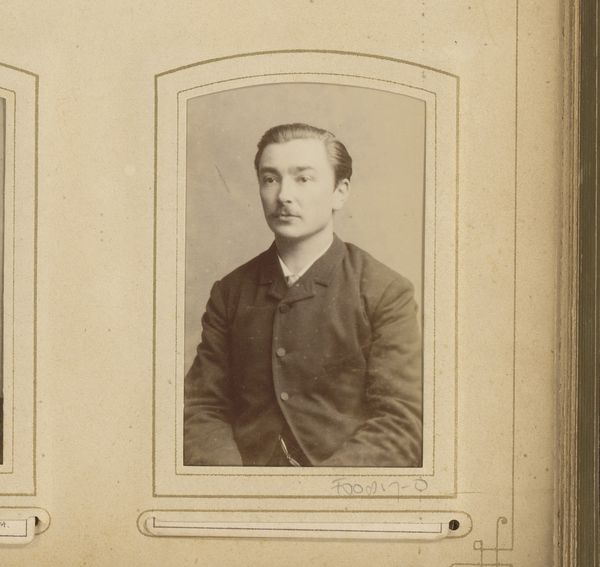
photography
#
portrait
#
16_19th-century
#
photography
#
historical photography
#
19th century
#
realism
Dimensions: height 86 mm, width 53 mm
Copyright: Rijks Museum: Open Domain
Curator: Look at this fascinating photo portrait by Huijsen & Zoon, simply titled "Portret van een geestelijke" - or "Portrait of a Clergyman" – dating to the late 19th century. Editor: My first impression is… serenity, maybe? There’s a certain quiet dignity emanating from this figure, trapped within this gilded oval, like an antique cameo. He seems approachable, more of a kindly uncle than a fire-and-brimstone type. Curator: Exactly! He occupies this strange middle ground, a liminal space perhaps symbolic of the clergy's role in mediating between the earthly and spiritual realms. Consider the societal role he inhabited; how did codes of conduct around religion affect visual representations of such individuals? Editor: I'm intrigued by the lack of ostentation, or is it? Given the limitations of photography in that era, did subjects participate in their own representation to reflect certain performative social codes, constructing an “authentic” sense of self for posterity? The simple black garb hints at a rejection of materialism but perhaps functions to enhance authority instead. Curator: A calculated humility, perhaps. You're hitting on some crucial points: photography at that time involved lengthy exposure, demanding a certain stillness from the sitter. The choice of sepia tones lends a timeless quality and contributes to that contemplative aura you noticed. One wonders about his life. Editor: Absolutely. These 19th-century portraits become documents for scrutinizing the power structures, modes of production, class status, gender performativity… This photograph embodies the male, religious order whose role was paramount in solidifying the dominance of structures of colonialism at the time. But he’s also, you know, just a man with a life lived. It’s a dance of binaries. Curator: Right? There’s something deeply affecting about seeing him suspended in time like this. This feels more intimate, vulnerable… it's not a monumental painting, and yet he is eternally present. Editor: Agreed. What resonates for me is the quiet subversion inherent in revealing this clergyman as both a symbol of institutional power and an individual subject with the potential for agency, contradiction and grace. Curator: It is striking how much complexity they manage to convey. It prompts questions far beyond just aesthetics, inviting us to think about power, faith, representation. Editor: It is about recognizing humanity amidst the history. He represents systems, but is ultimately an individual navigating these.
Comments
No comments
Be the first to comment and join the conversation on the ultimate creative platform.
